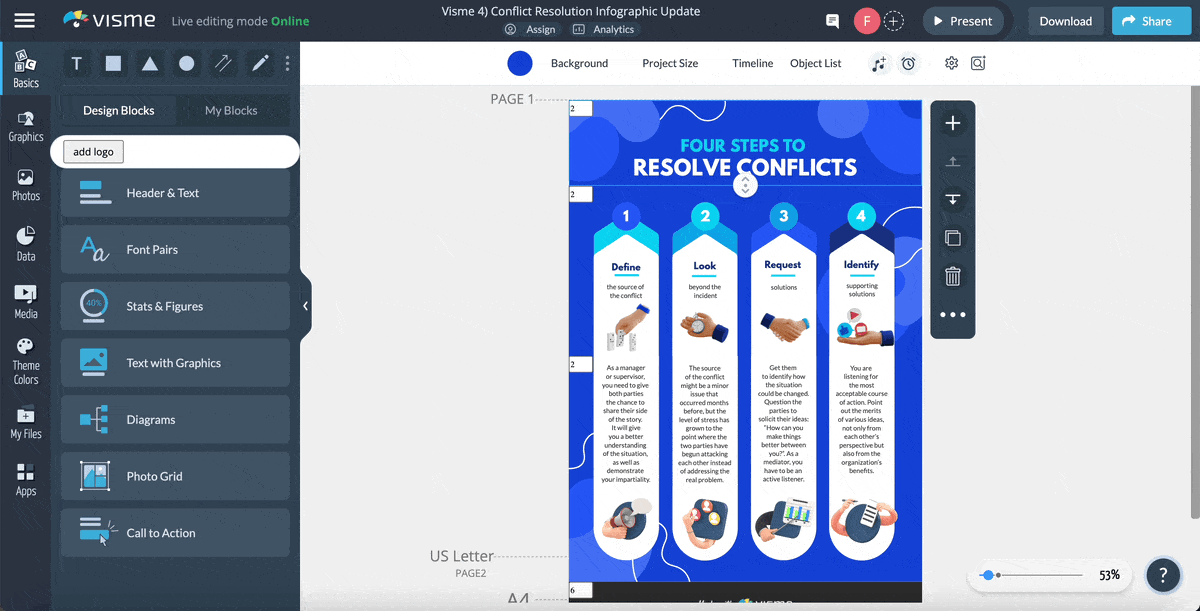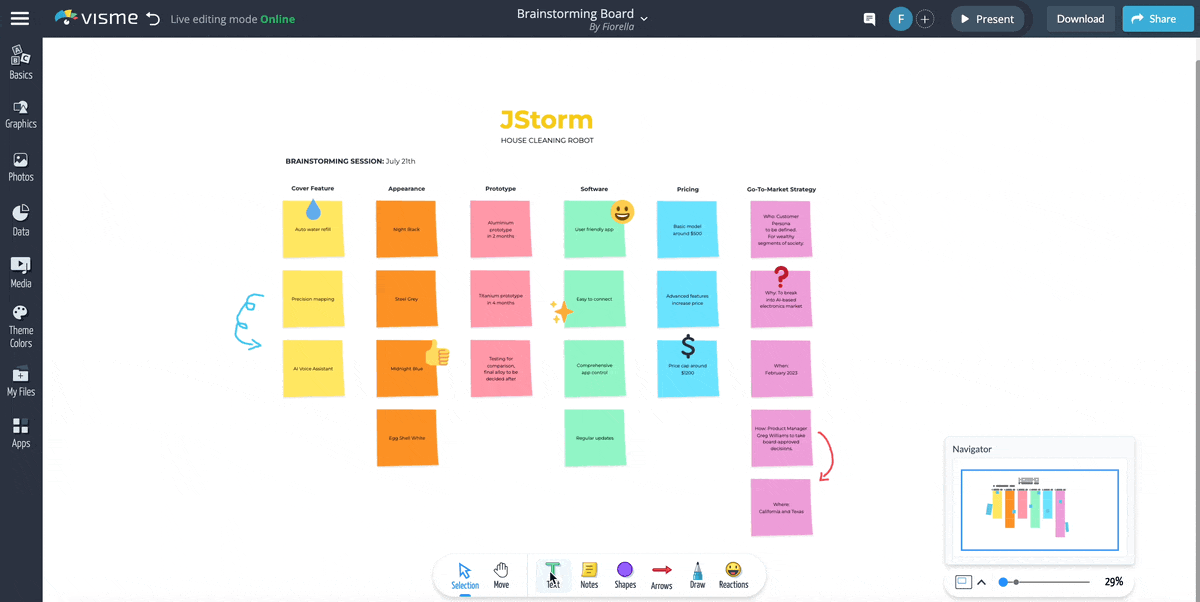
How to Create Successful Interactive Training Courses


Imagine a workplace where every training session leaves employees energized and eager to apply their new skills. That’s the power of interactive training courses.
Research has consistently shown that students who actively engage in the learning process retain information better than passive learners. But many companies still rely on outdated, one-way training methods that leave employees bored and disengaged.
Using interactive elements like gamification, simulations and group discussions can dramatically improve the effectiveness of your training programs.
In this article, we’ll show you how to create interactive training courses and activities that ultimately lead to better performance. We’ll also cover ways to incorporate interactive training in different areas of your business, such as developing leadership skills, revamping your onboarding process or improving compliance.
If you're short on time here are five interactive ideas for your next training and development course.
Interactive training is a hands-on learning approach that actively involves participants in the learning process. Instead of passively receiving information, learners engage directly with the course material through activities, discussions and real-world scenarios.
For example, in a customer service training session, participants might watch a video of a challenging customer interaction and roleplay different scenarios to practice decision-making. These activities are an excellent way to make learning more memorable, engaging and effective.
Interactive training can also take a hybrid learning approach. It’s all about learning by doing rather than just listening or watching. It enables employees to immediately apply new knowledge and skills, which prepares them for actual situations they’ll face on the job.
Apart from making learning more fun, interactive training can help your business in dozens of ways. Here’s why interactive training courses win over traditional training methods:
There’s no one way to develop an interactive training program. You have dozens of options when it comes to planning interactive courses and activities.
You can use a single approach or mix several of them to create a well-rounded interactive learning program that caters to different learning styles and helps your organization achieve its training goals.
Here’s how to create interactive content and training modules that engage employees:
Interactive training courses are designed to provide in-depth knowledge of a subject or facilitate skill development using a mix of theoretical and interactive elements.
Here are some ways to incorporate interactivity into your training courses:
Using interactive infographics as part of your training course is an excellent way to present complex information and make it easier to digest.
Infographics are engaging, data-driven and particularly effective for visual learners. They’re also great for breaking down how-tos and step-by-step processes.
For example, here’s an infographic on conflict resolution that you could use as part of your training courses:

Here are some best practices for using infographics in corporate training:
Presentations shine in interactive courses because they offer a structured yet flexible approach to delivering training content.
They put trainers in the driving seat by enabling them to guide the learning journey. At the same time, you can incorporate real-time interaction through Q&A sessions, polls, discussions and multimedia content.
Employees can also access training presentations asynchronously through interactive slide decks shared via the company’s Learning Management System (LMS.)
Pro Tip: Visme lets you design and export your presentations, infographics and other interactive training materials in SCORM and xAPI formats to seamlessly integrate with your chosen LMS.To make your training presentation interactive, add elements like:
You can create an interactive presentation incorporating all the above elements using Visme. Here’s an example you can check out for yourself:

Video is a powerful interactive training tool. You can weave short explainer videos into existing training content like presentations or documents, or share them on their own.
Videos follow a more “show, don’t tell” approach, making them great for visual and auditory learners. They’re handy for demonstrating processes or explaining technical ideas in a more personal, human way.
For example, look at this safety training video from Turkish Airlines:
The animated characters and audio narration make the information easier to consume, understand and retain than a printed card distributed among passengers.
Here are some best practices to keep in mind when creating interactive training videos:
Visme’s online video maker can help you create interactive training videos that keep learners engaged. You can customize dozens of ready-made video templates, add 3D animated characters and illustrations, record voiceovers or add music. Also, you can create scene-by-scene sequences easily using a timeline editor.
Gamification taps into your employees’ natural love for competition and achievement, which does wonders for boosting their motivation. And it makes learning fun!
The idea is to incorporate gaming elements like points, leaderboards and awards in a non-game environment to transform training into an engaging, enjoyable experience. This method is especially effective for ongoing or long-term training programs.
Made with Visme Infographic Maker
For example, let’s say you’re conducting sales training in your organization. A gamified learning approach could be to award sales reps with points for correctly answering daily quiz questions about product features. The top performers could receive recognition and small rewards at the end of the week or month.
Branching scenarios present trainees with choices and consequences to help them practice making day-to-day decisions in their jobs in a risk-free environment.
For example, let’s say you're designing a customer service training program. In one of the interactive training modules, you present your team with a scenario: a frustrated customer calls about a delayed shipment.
Employees have three options:
As your team navigates through the scenario, they'll experience different customer reactions based on their choices. For example, explaining the delay might lead to further questions or frustration.
Branching scenarios are especially useful for training in areas where judgement and decision-making skills are crucial, such as client-facing, HR and management roles.
Here are some tips for implementing effective branching scenarios in your training programs:
Tests and quizzes are among the most widely used interactive training activities. That’s because they’re highly effective and super easy to build. They not only test knowledge but also help businesses identify areas where employees need more focus.
For example, you might create a quiz on safety procedures for your warehouse team. Include questions about proper lifting techniques, identifying hazards and emergency protocols.
Follow these tips on designing training quizzes and assessments that actually work:
Breakout sessions are when you split your team into smaller groups during training. It's a great way to get everyone talking and sharing ideas.
Why does this matter? Because it builds collaborative skills and sheds light on diverse perspectives. Plus, it gives the quieter folks a chance to speak up in a less intimidating setting.
Group discussions and brainstorming sessions are amazing activities for encouraging teamwork and generating innovative ideas. They’re also useful for building problem-solving skills, as the open exchange of thoughts often leads to insights beyond an individual's capability.
For example, in a leadership training program, you might split your team into small groups and give them a tricky work problem to solve together, like how to improve team morale during a company restructure.
Let them use a digital whiteboard to jot down ideas and encourage everyone to build on each other's thoughts. At the end, each group shares their best idea, which helps spark a great chat about different ways to lead during challenging times.
Remember, this method works best when everyone feels free to contribute without judgment. The real magic happens when ideas start bouncing off each other.
Here are some tips and best practices for productive group discussions:

This is different from gamified learning, which adds game elements to your regular training content. Game-based learning is when you use actual games for training purposes.
In this interactive training activity, the entire learning experience is structured as a game, with learning objectives baked into the gameplay. This can make even challenging or dry topics more approachable and fun.
For instance, you might create an interactive training game where employees run a virtual store and make decisions that teach them about inventory management and customer service. Of course, you'll need a an extremely agile interactive training software to make this task effortless.
Roleplaying is kind of like trying on different hats at work. Employees can experiment with different approaches to interpersonal situations without real-world consequences.
It’s great for building empathy and improving people skills, like dealing with upset customers or having tough chats with team members.
Here are some tips to excel at this interactive training activity:
Roleplaying works because it's active and emotionally engaging. It lets people practice responses in a safe environment before facing similar situations on the job.
Want to implement interactive training but not sure where to start? The good news is you can enhance all types of business training with a splash of interactivity.
In this section, we’ll look at several interactive training examples and ways to incorporate it in different areas of your organization.



Once you're done, create a training matrix to track employee progress and evaluate the training to identify any skill gap analysis you may need to address for future trainees.
Interactive learning boosts engagement and retention by turning passive listeners into active participants. It also helps learners apply new knowledge immediately, which improves their job performance and makes your business more productive in the long run.
Finally, interactive training can adapt to various learning styles, which means it’s more inclusive and effective to implement across large and global organizations.
Interactive training is better than traditional training because it caters to various learning styles and promotes active participation. It also allows trainees to instantly apply new knowledge and skills, and creates a more engaging learning environment. This leads to higher retention and better on-the-job performance,
An interactive teaching example is a roleplaying exercise where customer service reps practice handling difficult customer scenarios. Participants take turns playing customers and reps, followed by feedback from peers and instructors. This hands-on approach helps develop communication skills in a risk-free environment.
Interactive activities are hands-on exercises that encourage active participation in the learning process. These can include group discussions, simulations, quizzes, problem-solving tasks and digital games. Interactive activities are designed to engage learners, encourage critical thinking and provide practical application of knowledge.
Successful interactive training is all about engaging employees and having them actively participate in the learning process. The training environment is dynamic, with a mix of interactive training tools, courses and activities catering to different learning styles. Participants leave feeling confident about applying their new knowledge and skills on the job.
To engage students in interactive learning, use a variety of course materials and activities that appeal to different learning styles, such as videos, discussions, quizzes and group exercises. Additionally, create relevant, real-world scenarios for practice and incorporate interactive elements like gamification to boost motivation and learning.
Unlike traditional lecture-based courses, interactive training courses can better engage employees and help them retain information for longer. For your business, this translates into a higher training ROI and improved performance over time.
Design interactive training courses and activities easily with Visme. Access editable interactive templates to slash your course creation time in half. Add interactive elements like animations, link and video embeds, hotspots, hover effects, flipbook effect and more.
Visme also offers custom branding and AI-powered tools to help you generate text and images, edit photos, and even editable designs tailored to your unique needs.
But Visme is not just an interactive training software. It’s an all-in-one visual content creation platform that your entire company can use to design stunning, branded content for both internal and external communication.
Schedule a demo now to learn more about how Visme can help training and development teams create high-quality training programs, create interactive content and drive business growth and performance.
Or, sign up for free to start creating interactive content that drives results
Design visual brand experiences for your business whether you are a seasoned designer or a total novice.
Try Visme for free